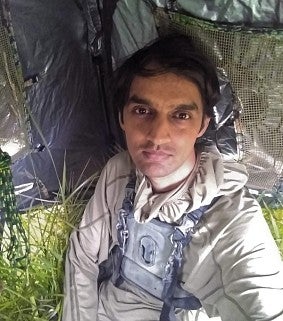What area do you work in within the VPFA portfolio?
I am an Enterprise IT Project Manager in the Project and Portfolio Management Office (PPMO), Information Services (IS).
What has been your career path; how did you end up in your current position?
I started my career as a .NET developer for Symantec (BindView), but I was more interested in the business side of things. I eventually pursued an MBA from the University of Mumbai and majored in Marketing. After a few other gigs, I was hired for product design at a telecom company called Tata Communications. But life had other plans! The Great Recession of 2008 led to major budget cuts in product development, and I was internally re-hired by the enterprise project delivery team.
I knew virtually nothing about project management but was fortunate to have some great mentors. Ours was a small team supporting a massive organization, and I worked as part technical lead, part project manager. I was assigned more complex projects as I gained experience, such as migrating the intranet to SharePoint (later, to O365 cloud), a global payroll system (compliant with the laws of 38 countries), and a global inventory management system. I also edited and published a monthly IT newsletter.
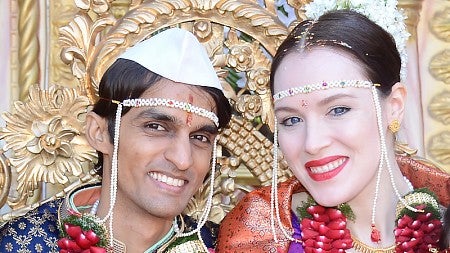
All this while, I was in a (mostly) long-distance relationship with my girlfriend Cheryl, who is a Portland native. That 8000-mile distance needed to be bridged, so I quit my corporate job and started a copywriting business, primarily serving e-commerce businesses. In simple terms, a copywriter creates content to boost sales for a client. This content or “copy” can be anything from a Facebook ad to an email marketing campaign. Working as a digital nomad gave me the freedom to relocate to Oregon to start a new life with Cheryl.
Over time, being a digital marketer stopped being fulfilling. Running a business was stressful enough, but I also grew disillusioned with the culture of mass consumption, and my role in it. My creativity was gradually replaced by deadness, so I stopped taking on more clients and began looking for project management opportunities in the Northwest. And that’s how I ended up at the University!
What obstacles have you overcome in your career?
The two biggest problems that I have repeatedly faced in my career are: (A) what job role is the right fit for my aptitude and career goals, and (B) how do I gain the requisite skills and qualifications for it? For example, I could never have studied for a career in project management because I did not know what it was. Also, had it not been for the economic upheaval caused by the 2008 Recession, I would probably not have gotten an opportunity to manage enterprise-level IT projects, given my lack of prior experience.
I’ve earned a bachelor’s degree in engineering (IT) and an MBA, as I come from a cultural background that emphasizes formal education. However, I gained my “real” education from on-the-job experience. In hindsight, I should have gained some work experience before deciding what degree courses or certifications would benefit me the most.
The advice I would offer my younger self would be to start your career somewhere (and quickly), learn from people in different job roles to understand what interests you, and gain certifications (or a formal education) as needed. Professional certifications are a good way to gain and demonstrate theoretical knowledge and can get your foot in the door for what you want to do next. With how quickly technology has been changing, perhaps the most important skill is the ability to learn new skills.
How has working at UO enabled your professional goals and interests?
There’s something to be said about McGregor’s “Theory Y” – that people are innately motivated to do their best work in a supportive work environment. UO Information Services fosters a culture of personal accountability and mutual trust. Everyone I’ve met cares deeply about their work, often doing more than they are expected to. At the same time, it’s easy to maintain a healthy work-life balance and take time off as we need it.
As a result, I get to work with immensely talented people who not only care about their jobs, but about the wider community. For example, I have the pleasure of serving on Diversity, Equity and Inclusion (DEI) committee and other groups which are working to create an even more inclusive work environment, improve hiring and retention, and allow the UO community to adapt quickly to new technologies such as AI.
Working at a public research university offers the unique opportunity to interact with experts in science, history and the arts, and have a free exchange of thought on sociocultural issues, which is very different from working in a corporate environment.
Please share some insight into what your job involves.
Fundamentally, the role of a project manager is to make work easier for team members. I help bridge differing expectations of stakeholders, customers, and my team, so that team members with specialized skills, such as developers, database administrators or network engineers, are free to focus on what they do best. My view is that there often isn’t a single best solution to a problem – but it’s important to make decisions quickly (accepting any potential drawbacks) and stay flexible, to maintain momentum and deliver projects on time.
There are various project management methodologies – and while it is important to know how to apply them, it’s equally important to know when NOT to. Process or documentation should never get in the way of actual work. I also believe in the philosophy of Kaizen – that is, to deliver a solution quickly, and make continued improvements with each subsequent iteration, rather than to pursue perfection on the first try.
Share a little about yourself personally:
I wouldn’t be me without animals. My parents were both university faculty, and I spent most of my childhood vacations browsing wildlife encyclopedias in the library of the Science college, wonderstruck at the endless diversity of life. I taught myself painting so that I could portray the animals and behaviors I was reading about. Later in life, I got involved in wildlife rehab and pet rescue, and became a vegan. I networked with like-minded people, and that’s how I met my wife. Wildlife-watching got me interested in photography, which led me to exploring new places and learning basic robotics, outdoor skills, and rock-climbing, all so that I may take better photos. Changing my diet also got me interested in cooking, learning about other cultures, and growing food.
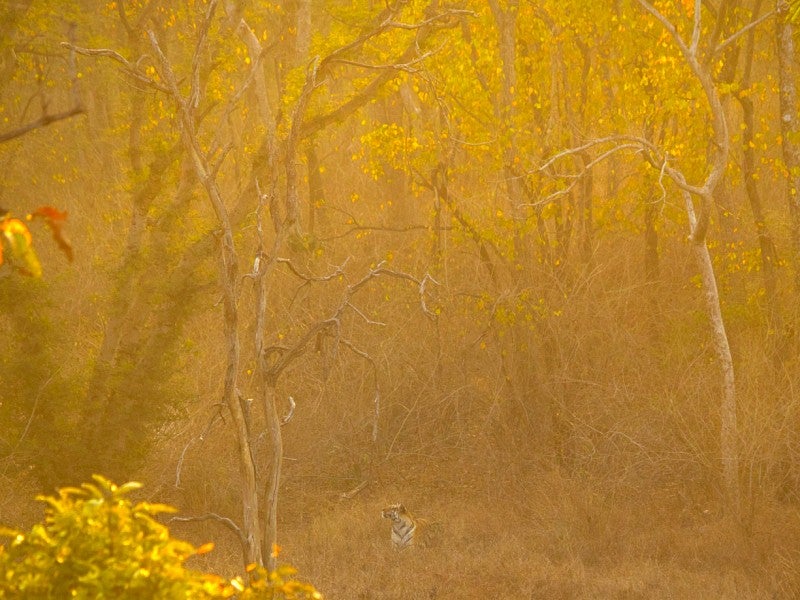
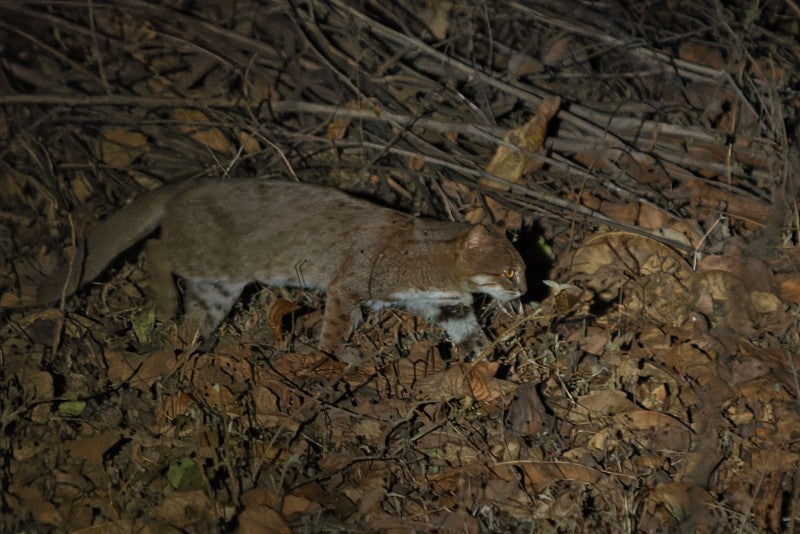
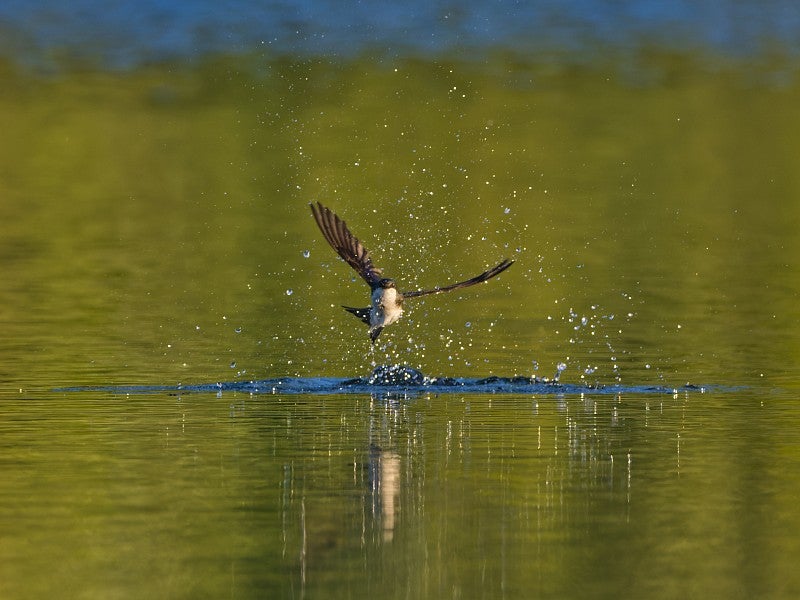
So nearly everything about me – my family, interests, values, lifestyle – has been shaped by an affinity for non-human animals. As for the books that started it all – they have long been out of publication, but I tracked them down and they now have a place of pride in our home library. 😊
Cheryl and I currently have four children …
- Arú (Roo) was found in Costa Rica with his back legs paralyzed, surviving on trash. He was rescued and treated by Magic Marble Foundation (video) and now lives a tranquil life with his feline
overlordsbrothers. - Aquila is an exceptional cat – regal, empathetic and highly intelligent. He even plays his mother’s harp with his teeth and paws every day! His name means “eagle” and it describes him perfectly.
- Talwar was a stray cat with complex health issues (mange, UTIs etc.) whom we found in Springfield. He is a sweet, gentle soul who loves to talk to us. He and Aquila are now inseparable.
- Pip Squee (Puffles the Great) started life as a feral who distrusted all humans. Now all he does is purr non-stop and ask for belly rubs. Due to poor early nutrition, he has no front teeth (incisors) and is mute (cannot mew), which makes him even more precious.
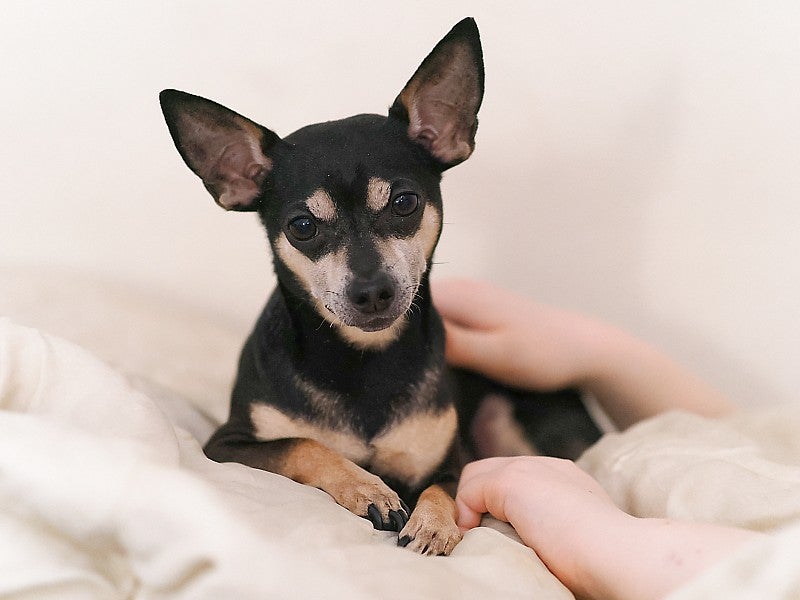
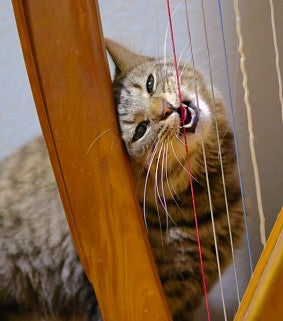
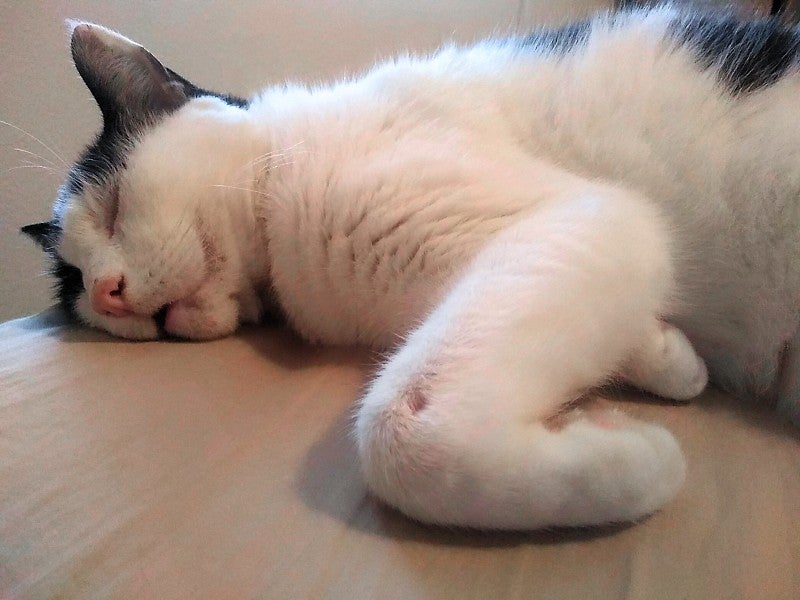
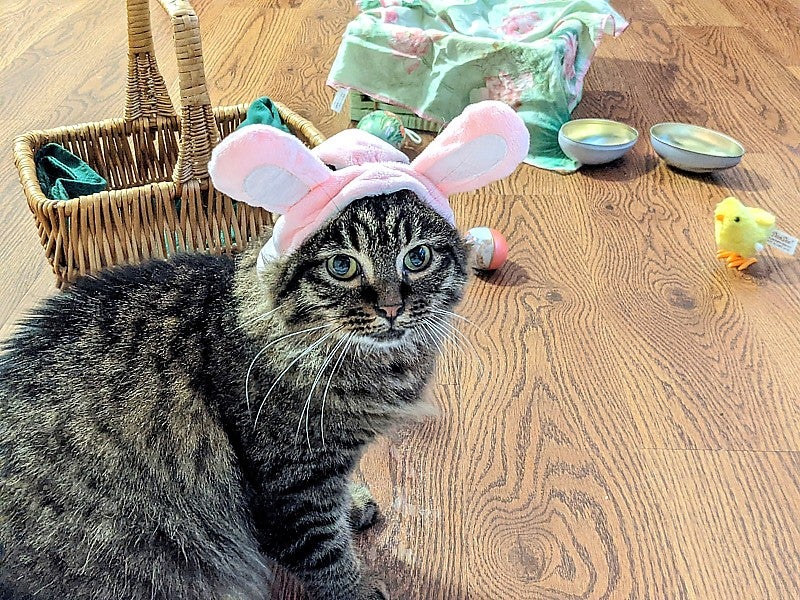
(June 2024)

